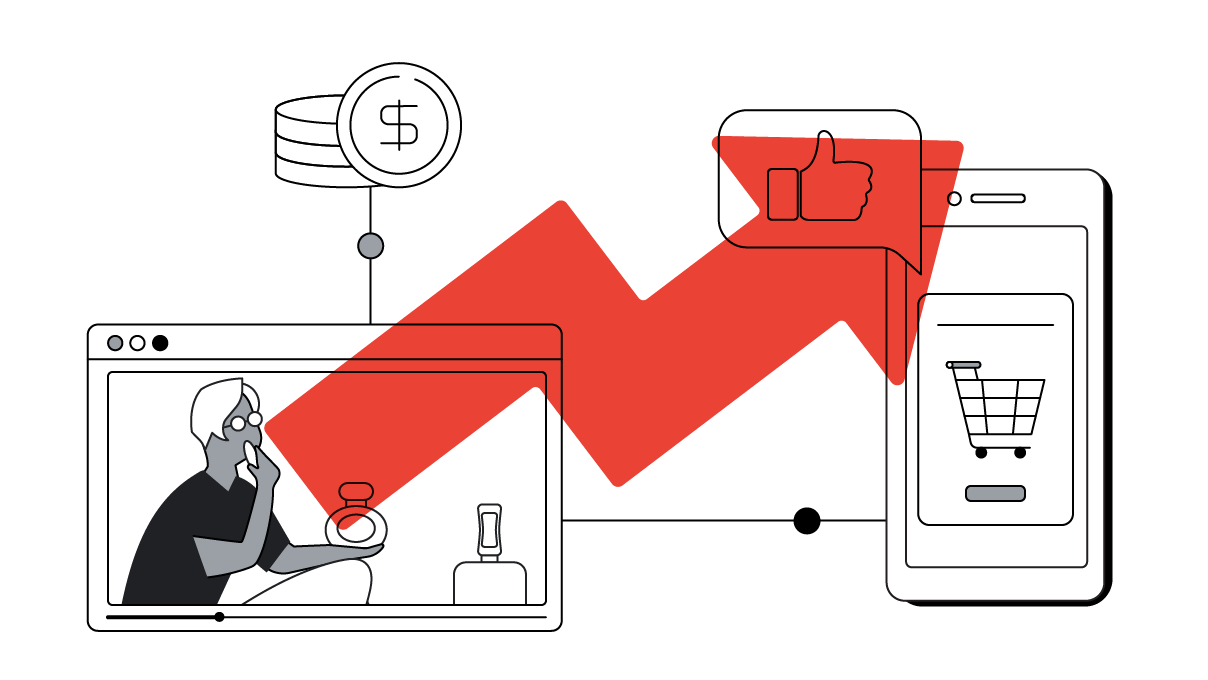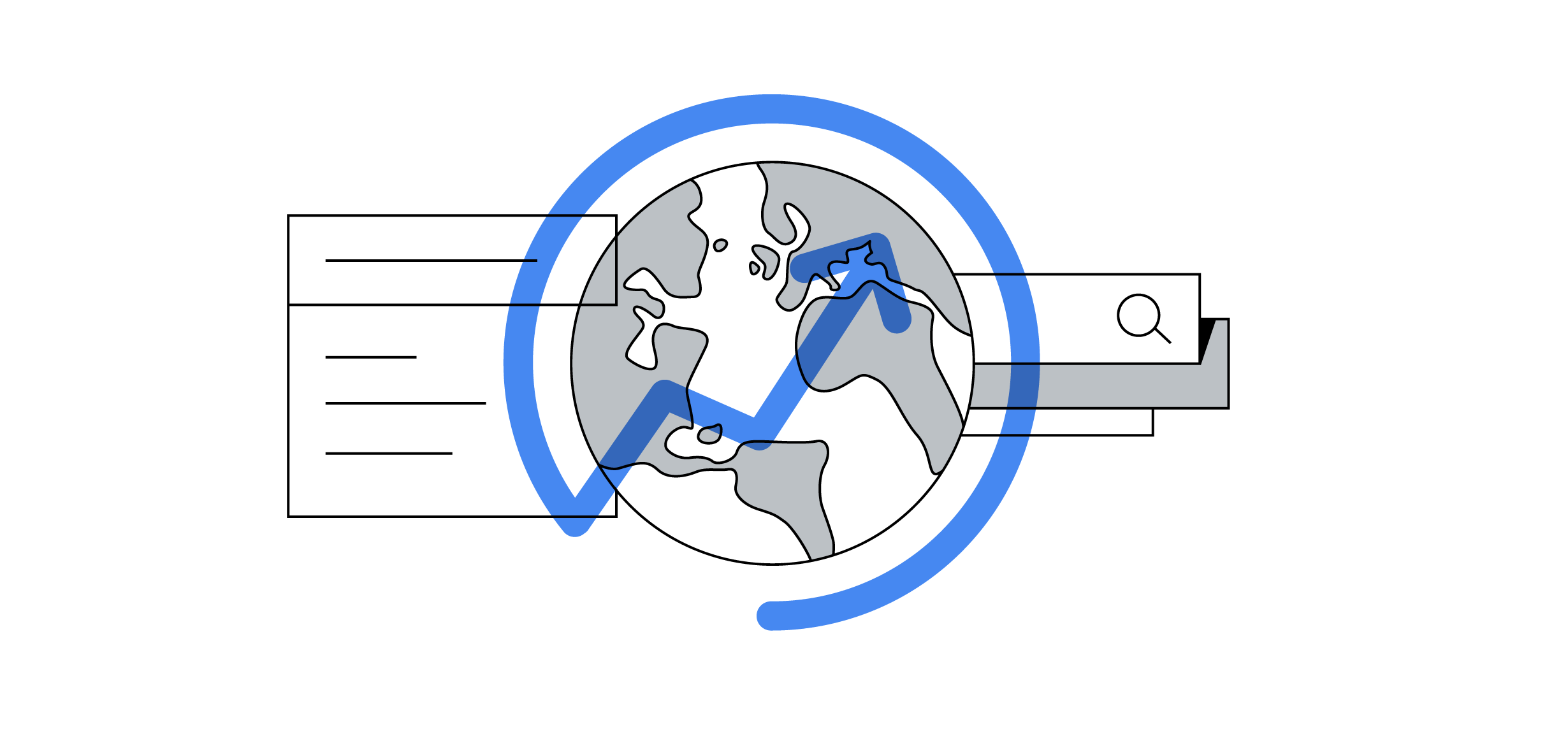People in India are finding a glimmer of hope in the coming year-end celebrations. As the country recovers from the second wave of COVID-19, we’re observing a sense of cautious optimism among consumers.
We see hundreds of millions of shopping-related searches every day, and since last year, we've been noticing three nuanced shifts in the online behavior of India’s shoppers.
Micro-shifts in the behavior of Indian shoppers
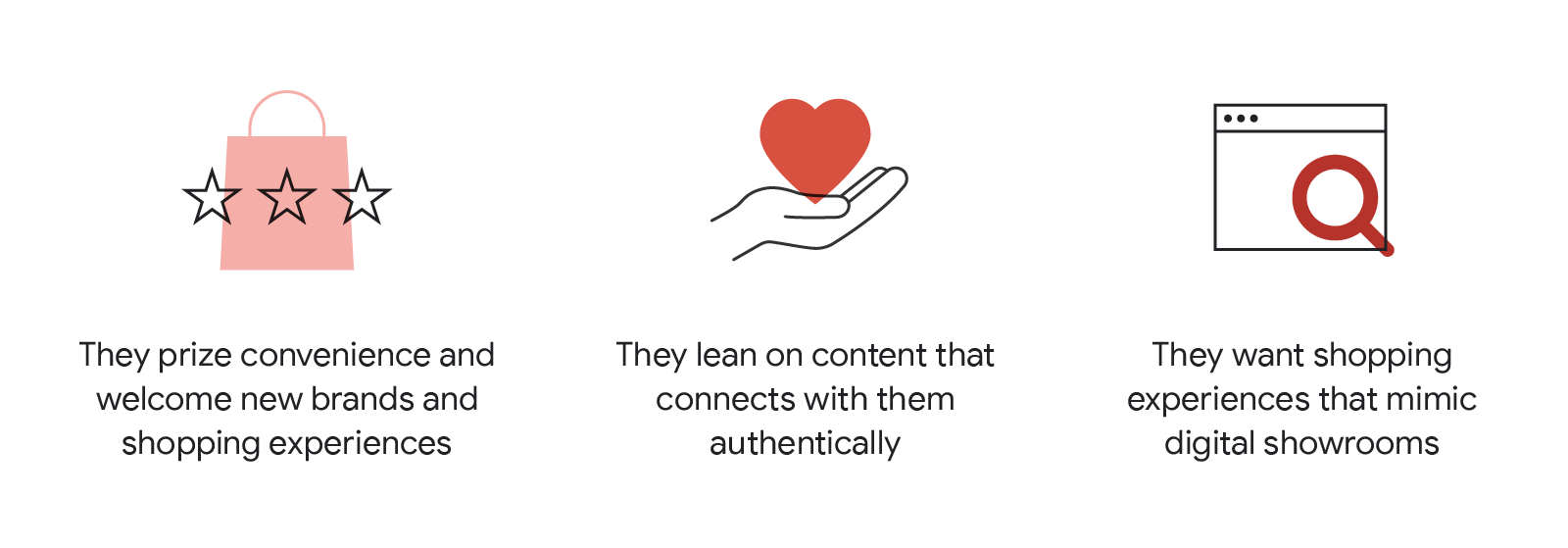
We’re also seeing an increase this year in festivity-related search interest for holidays like Onam, Durga Puja, Dussehra, Diwali, and Pongal.1, 2 But with 50% of consumers still concerned about attending in-person events, how will India celebrate differently this year, and what will this mean for brands?
Here, we share how brands can rethink their online retail strategy to leverage the three micro-shifts in shopper behavior and connect more meaningfully with India’s 177 million online shoppers.3
Micro-shift 1: They’re open to something new, but convenience reigns supreme
India’s population of online shoppers is growing fast. Of its 177 million online shoppers in 2020, 45 million were first-time online shoppers.4 Sixty-five percent of shoppers went online to buy a product they previously bought in-store, and more than 50% of Indian consumers have bought from a brand or store they’ve never shopped at before.5
Indian shoppers are open to what’s new
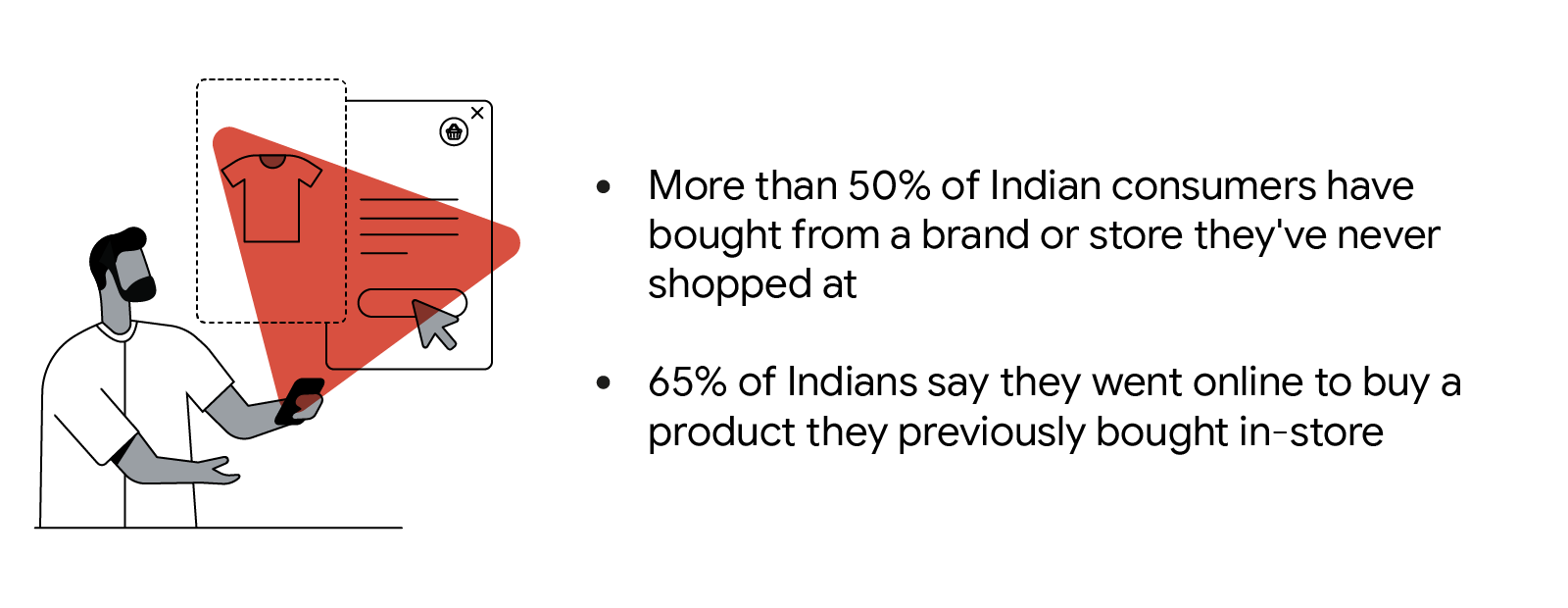
Video is helping people discover what’s new. In India, the watch time of videos related to online shopping increased by more than 90% in October 2020 compared with October 2019.6 And more than 70% of consumers say they use video to stay up to date on what’s happening.7 The festive season in India is an opportunity for brands to maximize their audience reach through online video.
In 2020, Poco, India’s fastest growing smartphone brand, used digital video to reach new audiences. Poco India’s Country Director Anuj Sharma said, “During the festive season, we wanted to build top-of-mind consideration for Poco amongst tech-savvy consumers. We leaned on a YouTube-heavy strategy to reach out to a large number of targeted consumers within a short duration to achieve our objective.”
The brand’s 11-day digital campaign used a combination of YouTube and Display Blast to drive sales and awareness. It expanded its audience targeting by identifying content that interests its audience: music, entertainment, photography, and comedy, and it reached out to audiences on these channels to drive a positive product association.
The campaign achieved 175 million in total unique reach, a 6% increase in relative ad recall, and 12% search uplift. In the first six days of the campaign alone, Poco sold 1 million smartphones through a partner e-commerce site, surpassing the brand’s previous benchmarks.
As much as Indian shoppers are drawn to all things new, however, they still prize convenience. More than 70% of consumers say they’re okay with spending more on these conveniences, and they’re relying on new digital services for conveniences such as online inventory checks, reliable delivery, and click-and-collect services.8

Micro-shift 2: People value authentic content that serves their interests
People in India are looking for useful and authentic content in their quest to learn something or make a decision. More than half of Indian shoppers are turning to video to find unique ideas and to search for information about brands, products, and services.9 And 85% of consumers made a purchase after seeing an ad on YouTube.10
Shoppers in India are also spending more time watching YouTube videos on topics such as finance, online shopping, and homes.11 Unsurprisingly, online influencers are helping people make their next decision, big or small.12
Shoppers in India are watching more of their favorite content on YouTube
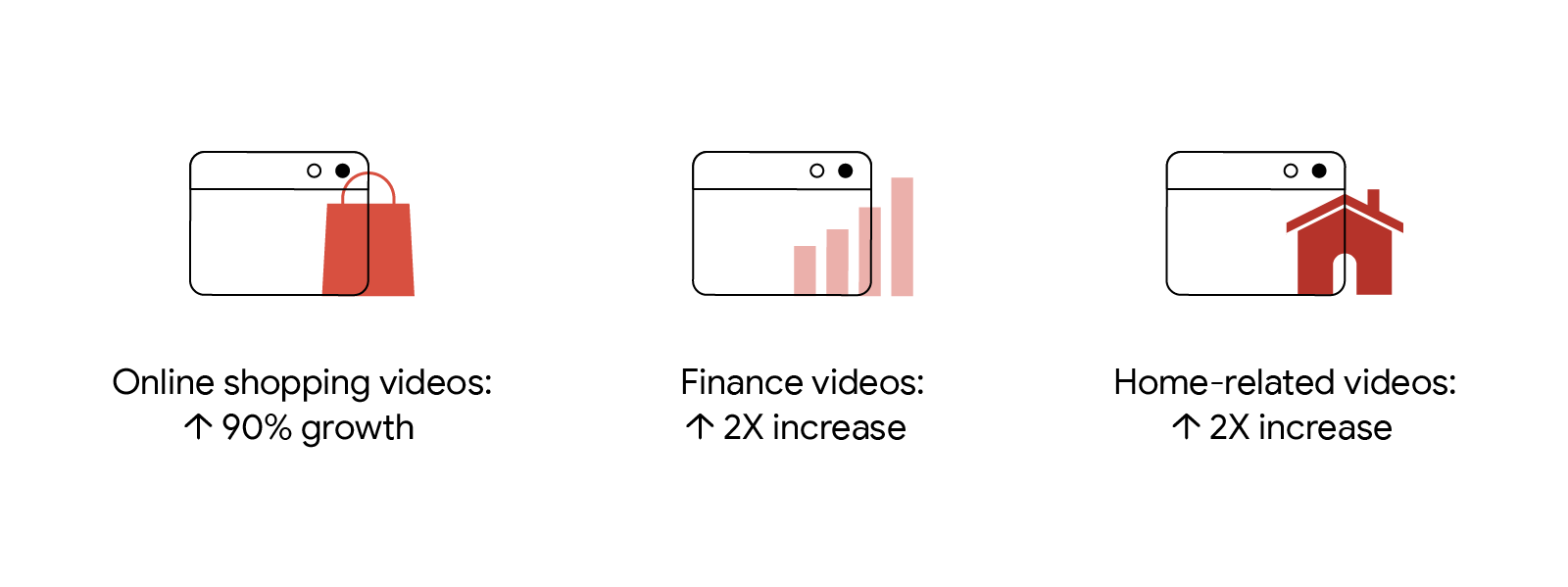
Given this shift in behavior, brands that provide content that is useful and entertaining will be able to connect meaningfully with people. India’s homegrown e-commerce marketplace Flipkart used this insight to reach Indian shoppers during The Big Billion Days, one of India’s most anticipated shopping festivals.
To build excitement and drive awareness and user engagement, Flipkart created fresh, never-before-seen content. It leveraged YouTube’s content creator ecosystem to produce a 10-episode game show, Big Billion Muqabla. Popular YouTuber Sahil Khattar hosted the show, which featured 20 YouTube personalities and their families. Flipkart ran the content on a popular YouTube channel, BeingIndian, which helped further increase viewership.
Big Billion Muqabla drew more than 10 million views on YouTube and more than 130,000 comments and likes across all episodes. Not least, the campaign led to more than 3.2 million customer engagements on the Flipkart app.
Flipkart’s Vice President of Marketing, Research, and Insights Nandita Sinha said, “YouTube as a platform offers unparalleled reach and engagement. The Big Billion Muqabla was built to leverage the YouTube creator ecosystem, and it helped build awareness and drive meaningful engagement in the buildup to The Big Billion Days.” By creating content that converges on what’s popular and useful, brands can connect with their audiences and drive results.
Micro-shift 3: People want more digital shopping experiences
India’s fresh influx of online shoppers is influencing what customers expect of shopping experiences. They want brands that offer both online and offline shopping to operate like digital showrooms with services such as contactless shopping, flexible payment options, and free and reliable shipping options.
What India’s shoppers want in a digital showroom shopping experience
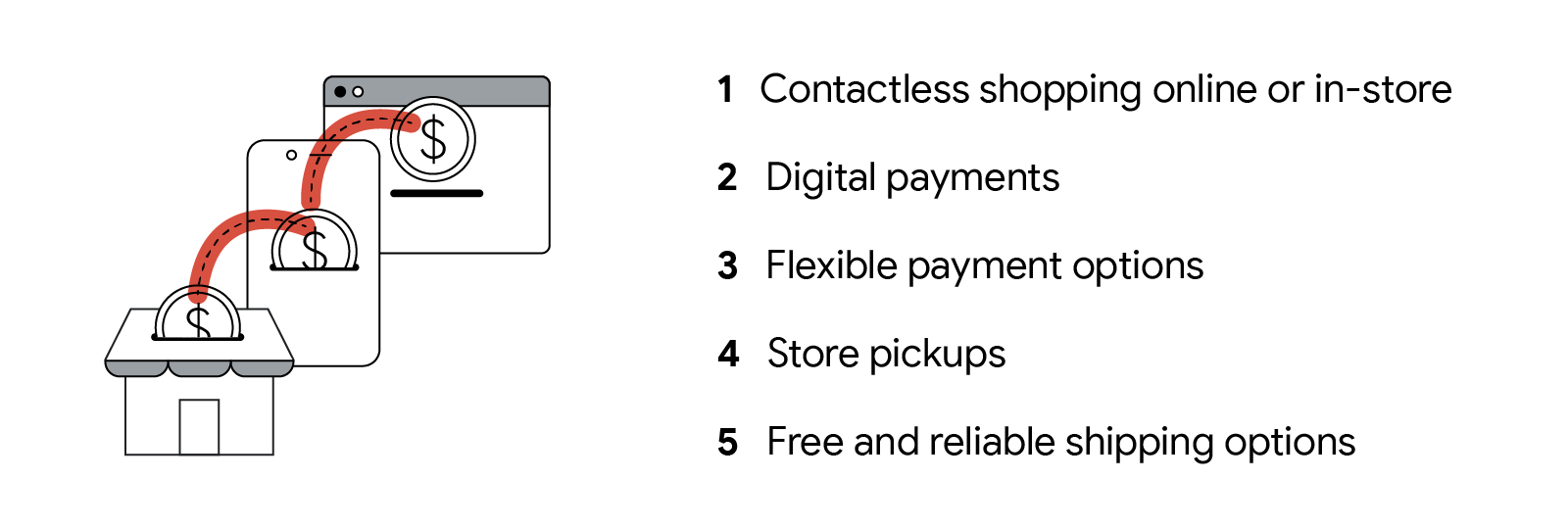
These consumer expectations mean brands need to provide more than sales and enticing offers this festive season. They need to provide shoppers a digital ecosystem that allows them to have a safe and reliable shopping environment. Two areas where they can enhance the retail experience are payment and shipping.
The volume of digital payments in India has grown 30% year-on-year from last March, while the volume of credit and debit card payments has declined by 19% and 20.6%, respectively, according to the latest annual report by India's central bank. This presents an opportunity for brands to provide more varied or flexible digital payment options in India. Indeed, there is growing interest among consumers for “Buy Now, Pay Later” and other short-term financing schemes.13 Such options are helpful for shoppers who want to buy big-ticket items during the festive season because they allow customers to spread out their payments over a period of up to 12 months, usually without interest.
Indian shoppers also value safe, reliable, and affordable shipping options: 78% of holiday shoppers say they will shop with stores that offer free shipping.14 Another convenience that will drive business is the in-store pickup: 55% of holiday shoppers say they will shop at stores with this service.15
Life may not be all back to normal just yet for India, but brands can be there for people during this year-end festive season. Armed with these insights on important micro-shifts in shopper behaviors, brands can better plan their year-end festive marketing strategy and create a safe digital shopping experience for people in India.
Contributor: Roohneet Kaur, Product Marketing Manager, Ads Marketing



